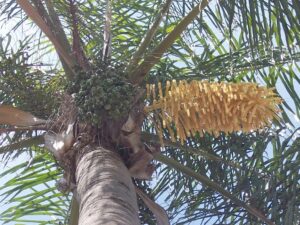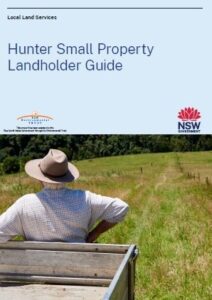The reserve at the end of Mud Bishop’s Point Road, past the caravan park in Old Bar, is steeped with history and holds a special place in the heart of the Old Bar community. It is named after recluse, retired policeman and swimming legend Wallace James ‘Mud’ Bishop who lived in a hut there, at the south channel of the Manning River near Farquhar Inlet from 1923 until his death in 1944.
Once a favoured family picnic spot, the reserve had fallen into disrepair and its isolation had encouraged vandalism, off-road vehicle damage and rubbish dumping – not to mention the flourishing of numerous weeds.
Walking trails, which lead through magnificent wet sclerophyll forest and ephemeral wetlands to the reserve, had also deteriorated since their original upgrade in 1999 by the former Old Bar Environmental Enhancement Group supported by the Lions Club and Greater Taree City Council. Manning Coastcare Group volunteers at Old Bar have recently teamed up with the local Lions Club and Men’s Shed, OzFish and MidCoast Council, the managers of the Crown Land, to work towards restoring the area and making Mud Bishop’s Reserve a clean, safe and environmentally healthy destination once again.
The current project kicked off in July 2022 when a small group of interested people joined Council staff in a walk from the Old Bar Heritage Airstrip to the reserve, checking out the condition of the trails and noting the indigenous species and incursion of weeds. Since then, trail surfaces and signage have been improved and vehicle access to the reserve limited by the installation of rock barriers, a temporary site camera, and an after-dark road barrier.
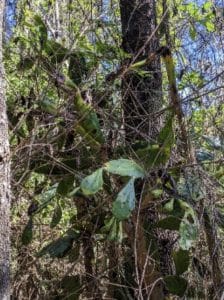
Prickly Pear – a Weed of National Significance
Eleven Coastcare volunteers joined OzFish and Lions Club members in a rubbish clean-up at Mud Bishop’s in April last year and were horrified at the amount of transformer and environmental weeds there. Ground and Climbing Asparagus were rife, along with thick Coastal Morning Glory, large Lantana and Wild Tobacco plants and a lot of Prickly Pear. Along the water’s edge and among the Mangroves we found the serious weed Juncus acutus, a spiny rush that forms dense hemispherical tussocks with stems which end in very sharp, hard points that can pierce the skin.
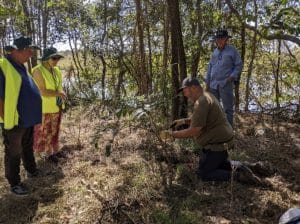
Learning about weeds and their control
As the Lions Club had approached council to volunteer their time to maintain the grassed areas and gardens, and this would entail weed identification and treatment, Coastcare members delivered an on-site training session for Lions volunteers covering not only plant information but also the health and safety precautions they would need to protect themselves.
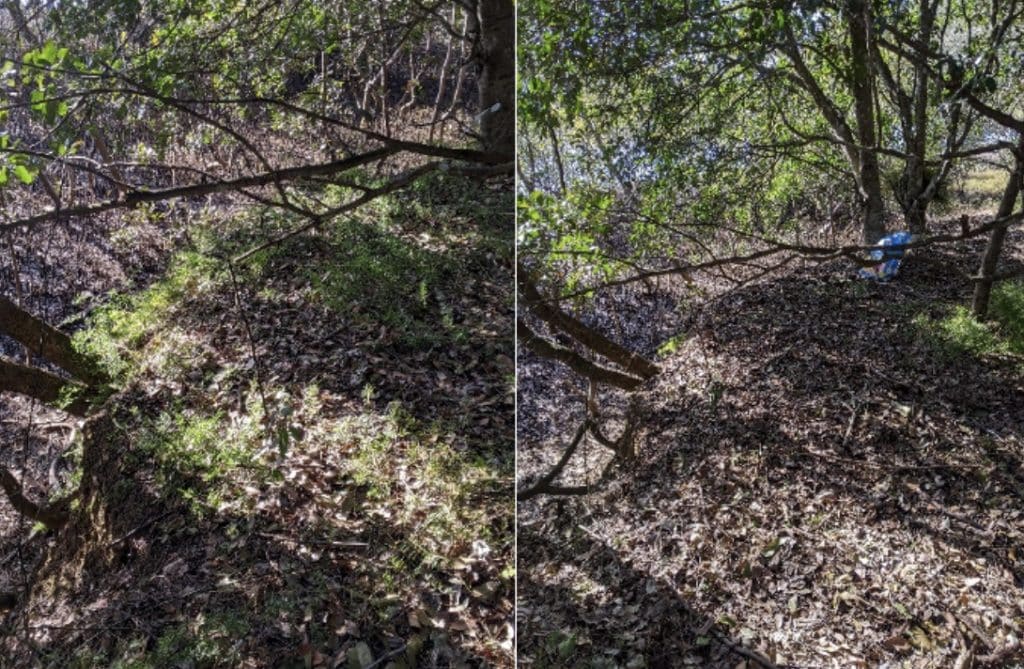
Ground Asparagus – before and after
For the rest of last year Coastcare volunteers, working both on Tuesday and Saturday mornings, spent many successful hours on weed eradication around the reserve perimeters and riverbank. Liaising with council was also an important role, with contractors called in to spray significant weeds located by our volunteers, as well as some very large older growth weeds. It is hoped to also run a joint trial of leaf smut fungus, developed by CSIRO, to tackle the large amount of Tradescantia (Wandering Trad) flourishing in the damp environment.
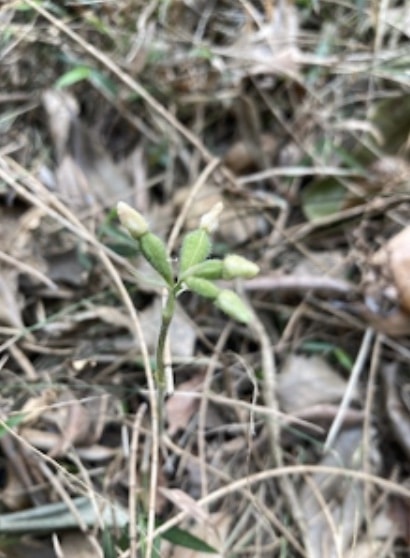
Southern Fleshy Jewel Orchid, a modest but significant find
On a more cheerful note, two of our Coastcare volunteers recently spotted a small terrestrial herb in the Orchidaceae family, identified as Cheirostylis notialis or the Southern Fleshy Jewel Orchid, flowering in the grass beside the road near the picnic area. This has been reported as an occurrence at the southern limit of the plant's usual location and noted in our Site Action Plan for Mud Bishops. Next Spring we will also be on the lookout for Diuris aurea, another rare native orchid which has been found in the past in the heathland adjacent to the Old Bar Heritage Airstrip.
The restoration and maintenance of Mud Bishop’s Reserve is an ongoing community initiative, and Manning Coastcare Group and all the volunteers and organisations involved are hopeful that the vandalism and abuse can be eradicated, and the natural beauty and serenity of the area will shine through for all to enjoy.



